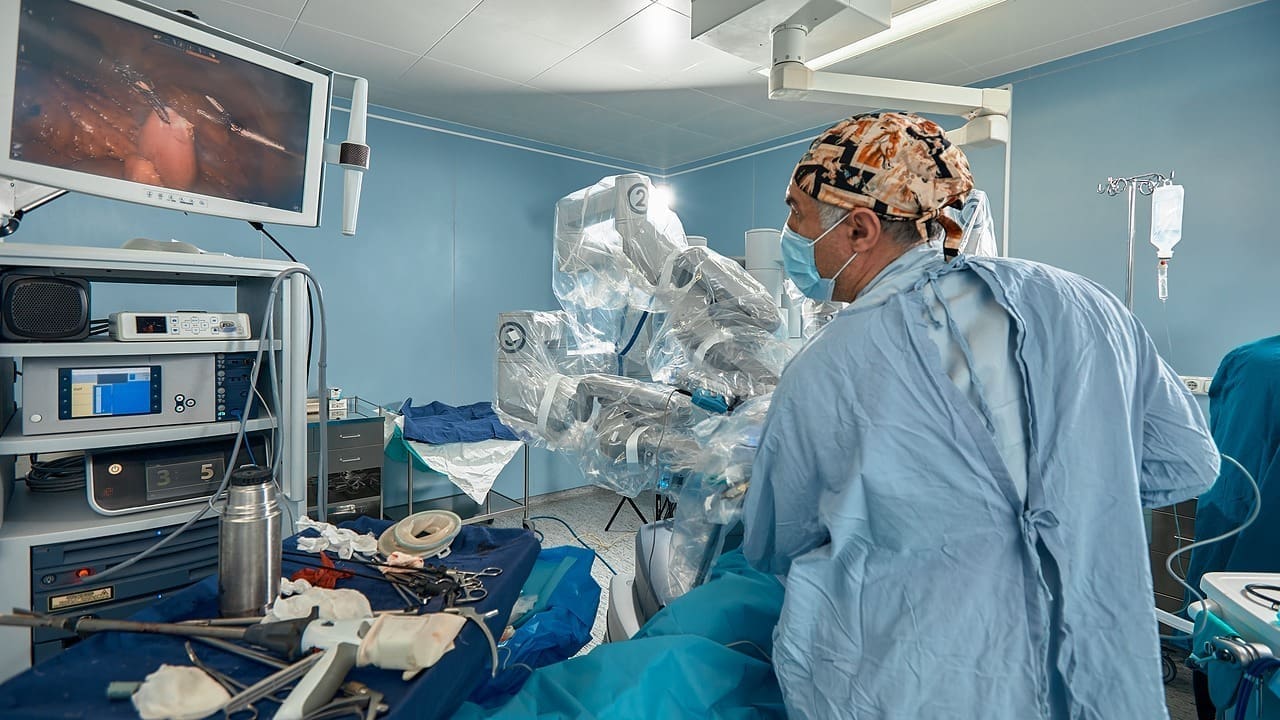Last Updated on November 26, 2025 by Bilal Hasdemir

Aortic stent failure is a serious issue that can be deadly. It’s important to know the warning signs to act fast and avoid big problems.
Liv Hospital’s patient-focused approach helps patients understand the symptoms and issues linked to aortic stent procedures. Problems like endoleaks, stent-graft migration, and infection can happen if the stent fails.
Spotting symptoms early can make a big difference in how well a patient does. Signs include limb ischemia, fever, weight loss, pain, and aortic rupture.
Key Takeaways
- Recognizing the warning signs of aortic stent failure is key for quick action.
- Stent failure can cause serious issues, like endoleaks and infections.
- Look out for symptoms like limb ischemia, fever, weight loss, pain, and aortic rupture.
- Liv Hospital focuses on helping patients understand these symptoms and problems.
- Spotting symptoms early can greatly improve patient outcomes.
Understanding Aortic Stents and Their Function

Aortic stents are medical devices used to treat aortic dissections by reinforcing the aortic wall. These stents are a key part in managing aortic dissections. They offer a less invasive option compared to traditional surgery.
What Are Aortic Stents?
Aortic stents, also known as stent grafts, are placed in the aorta to strengthen the diseased area. They prevent further dissection or rupture. Made from a metal mesh covered with fabric, they support the aorta and exclude the diseased part from blood flow.
The Role of Aortic Stents in Treating Aortic Dissection
Aortic stents are vital in treating aortic dissections. They ensure blood flows properly through the aorta and lower the risk of rupture. They are most useful for type B aortic dissections, occurring in the descending aorta. TEVAR (Thoracic Endovascular Aortic Repair) is now the top treatment for these cases.
| Benefits of Aortic Stents | Description |
| Minimally Invasive | Aortic stent placement is less invasive than open surgery, leading to quicker recovery. |
| Reduced Risk of Rupture | Stents reinforce the aortic wall, greatly reducing the risk of rupture. |
| Improved Blood Flow | Stents ensure proper blood flow through the aorta, improving circulation. |
Expected Outcomes After Aortic Stent Placement
After aortic stent placement, patients can expect better blood flow and a lower risk of rupture. Recovery is typically faster than with open surgery. Yet, complications like endoleaks or stent migration can occur and need close monitoring.
Using aortic stents and stent grafts for aortic dissection reduces rupture risk. TEVAR is now a preferred treatment for type B aortic dissections. Understanding aortic stents’ role and benefits helps patients and healthcare providers make better treatment choices.
The 7 Key Symptoms of Aortic Stent Failure

It’s important for patients and doctors to know the symptoms of aortic stent failure. This condition can cause serious problems if not caught early. Spotting the signs early can help a lot.
Limb Ischemia: Signs and Significance
Limb ischemia is a big warning sign. It happens when blood flow to the limbs is cut down. This can make limbs hurt, feel numb, or weak.
Signs include cold limbs, pale skin, and weak pulses. Seeing a doctor fast is key to avoid serious harm.
Persistent or Recurring Fever
A persistent or recurring fever might mean there’s an infection or inflammation near the stent. Fever is a sign that needs checking. It could mean something serious is happening.
If you keep getting fevers after getting a stent, get checked by a doctor. It could be a sign of something serious.
Unexplained Weight Loss
Unexplained weight loss might be linked to aortic stent failure. It could be due to infection, inflammation, or other issues. Losing a lot of weight without reason is a red flag.
Abdominal or Back Pain
Abdominal or back pain could mean trouble with the stent. It might be due to leaks or the stent moving. The pain can be different, depending on the problem. If pain gets worse or starts, see a doctor.
Other signs include severe pain, low blood pressure, or shock. These are emergencies that need quick help.
Major Complications Associated with Aortic Stents
Aortic stents can lead to serious complications. These complications can greatly affect how well a patient does after the procedure. Aortic stent placement is a complex, minimally invasive procedure.
Endoleaks: Types and Implications
Endoleaks are a common issue with aortic stents. They happen when blood leaks into the aneurysm sac around the stent. There are different types of endoleaks, each with its own impact on patient outcomes.
Understanding endoleaks is key to managing and treating aortic stent complications well.
Type I chappen when the stent graft doesn’t seal properly at the ends. Type II endoleaks are caused by blood flowing back from branch vessels. Type III endoleaks are due to the graft failing, and Type IV endoleaks are caused by the graft being too porous.
It’s important to identify and treat endoleaks quickly to avoid serious problems like aneurysm rupture.
Stent-Graft Migration
Stent-graft migration is when the stent moves from its correct position. This can lead to the aneurysm not being properly covered or a dissection happening. Regular checks are needed to catch stent-graft migration early and prevent serious issues.
Infection and Inflammatory Response
Infection and inflammatory responses are serious issues after aortic stent placement. Infection can happen at the stent site or within the graft, needing quick antibiotic treatment or graft removal in severe cases. Inflammatory responses can also happen, leading to stent-graft thrombosis or migration.
Thrombosis and Embolization
Thrombosis and embolization are complications of aortic stents. Thrombosis in the stent graft can cause limb ischemia or other ischemic problems. Embolization can happen when debris breaks loose and travels to other parts of the body, causing damage.
Anticoagulation therapy and close monitoring are often needed to reduce these risks.
Aortic Stent Grafts for Treating Aortic Dissection
Aortic stent grafts are now a common treatment for aortic dissection. They help lower the risk of the aorta rupturing. Aortic dissection happens when a tear in the aorta’s inner layer lets blood flow between its layers. This can lead to serious complications.
Thoracic Aortic Dissection Treatment
Thoracic Endovascular Aortic Repair (TEVAR) is a key treatment for type B aortic dissections. It involves putting a stent graft in the thoracic aorta. This stops blood from flowing into the false lumen. TEVAR has been shown to reduce the risk of rupture and improve outcomes in patients with thoracic aortic dissection.
Abdominal Aortic Dissection Management
Managing abdominal aortic dissections often involves medical therapy and endovascular interventions. Stent graft placement is used to treat complications like malperfusion or aneurysm formation. The type of stent graft used depends on the dissection’s anatomy and the patient’s condition.
Risk of Retrograde Type A Dissection
TEVAR can lead to a risk of retrograde type A dissection. This happens when the stent graft causes a new tear in the aortic wall. This can be life-threatening. Careful planning and precise placement of the stent graft are critical to minimizing this risk.
End-Organ Malperfusion Concerns
End-organ malperfusion is a big concern in managing aortic dissections. It happens when the dissection affects blood flow to vital organs. Prompt intervention with stent graft placement or other endovascular techniques is necessary to restore blood flow and prevent organ damage.
Here are key points to consider for aortic stent grafts in treating aortic dissection:
- Accurate sizing and placement of the stent graft are critical to success.
- Regular follow-up is necessary to monitor for possible complications.
- The choice of stent graft type should be based on the individual patient’s anatomy and the specific characteristics of the dissection.
Common Types of Aortic Stent Grafts
Many types of aortic stent grafts have been made to handle aortic dissections and aneurysms. Choosing the right stent graft is key. It depends on the aortic problem and the patient’s body.
Fenestrated Stent Grafts
Fenestrated stent grafts have small holes for blood to flow to important aortic branches. They’re great for cases where the aorta’s problem affects these branches. This way, the stent can be placed without cutting off blood flow.
These grafts have opened up new treatment options for complex aortic aneurysms or dissections. They help keep blood flowing to vital areas, lowering the risk of problems.
Branched Stent Grafts
Branched stent grafts go beyond fenestrated grafts by directly connecting to major aortic branches. They’re best for patients with widespread aortic disease affecting many branches.
This design allows for a more precise treatment of complex aortic issues. It might reduce the need for more surgeries or changes later on.
Straight Tube Designs
Straight tube stent grafts are simpler than fenestrated or branched grafts. They’re used for aortic problems that are not too complex, like some dissections or aneurysms.
They’re often chosen because they’re simpler. This can mean shorter surgeries and fewer complications.
Selection Criteria Based on Anatomy and Dissection Type
Choosing the right aortic stent graft depends on the patient’s anatomy and their specific aortic issue. The location and size of the problem, the involvement of important branches, and the patient’s health are all important.
By looking at these factors, doctors can pick the best stent graft. This increases the chances of a good outcome and lowers the risk of problems.
Aortic Stent Placement Procedures and Techniques
New techniques have made aortic stent placement safer and more effective. The choice of procedure depends on the patient’s health, the type of aortic disease, and the aorta’s anatomy.
Minimally Invasive Endovascular Techniques
Techniques like Thoracic Endovascular Aortic Repair (TEVAR) have changed how we treat aortic diseases. TEVAR is chosen for its lower risk of complications and faster recovery. It involves placing a stent graft through small incisions in the groin, guided by imaging.
These techniques cause less trauma, lead to shorter hospital stays, and lower infection risks. But, they need careful patient selection and precise stent graft sizing for success.
Open Surgical Approaches
Open surgery involves opening the chest to directly access the aorta. It’s used for complex cases where endovascular repair is not possible. Open surgery allows for direct visualization and repair of the aorta, which can be beneficial in some cases.
Open surgery has evolved, with techniques like cardiopulmonary bypass and deep hypothermic circulatory arrest used to reduce risks. Yet, it generally has higher risks and longer recovery times than endovascular techniques.
Hybrid Procedures
Hybrid procedures combine endovascular and open surgical techniques. They are used for cases with multiple segments or affected visceral branches. Hybrid procedures offer a versatile approach, tailoring treatment to the patient’s needs.
For example, a surgeon might repair the ascending aorta surgically while using endovascular techniques for the descending aorta. This can reduce risks and improve outcomes in complex cases.
Recovery and Post-Procedure Care
Recovery and post-procedure care are key parts of aortic stent placement. Patients with endovascular procedures usually need less intensive care and can go home sooner than those with open surgery.
Post-procedure care includes watching for complications, managing pain, and follow-up imaging to check the stent graft’s function. Long-term follow-up is essential to monitor the stent graft’s durability and the disease’s progression.
Understanding the different procedures and techniques for aortic stent placement helps healthcare providers offer personalized treatment plans. This optimizes patient outcomes.
Diagnosing Aortic Stent Failure
It’s important to quickly find out if an aortic stent has failed. This is done by using imaging, lab tests, and clinical checks.
Imaging Modalities for Stent Evaluation
Imaging is key in checking how well an aortic stent is working. We use:
- Computed Tomography (CT) scans
- Magnetic Resonance Imaging (MRI)
- Ultrasound
- X-ray
Each method has its own benefits. We pick the best one for each patient’s needs.
Laboratory Tests and Biomarkers
Lab tests help spot problems linked to stent failure. Important tests include:
| Test | Purpose |
| C-reactive protein (CRP) | Check for inflammation |
| Complete Blood Count (CBC) | Look for signs of infection or anemia |
| D-dimer | Find out if there’s blood clotting |
Clinical Assessment Protocols
Doctors carefully check a patient’s symptoms and past health. They use regular check-ups and watch for signs like pain or limb problems.
For more on spotting stent issues, see ECR Journal.
Follow-up Schedules and Monitoring
Regular visits are key to catching stent failure early. The schedule depends on the stent type and patient risk. We use imaging and clinical checks together.
Good follow-up plans help catch problems early. This leads to better care for patients.
Treatment Options for Failed Aortic Stents
When an aortic stent fails, it’s important to know the treatment options. This is to avoid serious problems. The approach includes re-intervention, surgery, medical therapy, and emergency care for acute issues.
Re-intervention Strategies
Re-intervention is used to fix problems with aortic stent failure. This might involve endovascular re-intervention. It uses small, non-invasive methods to fix the stent or handle leaks. The choice depends on the failure type and the patient’s health.
Surgical Management Options
If re-intervention is not possible, surgical management is needed. Surgery might remove the failed stent and replace it with a new one. Or, it might involve a surgical bypass. The decision is based on the patient’s health and risks.
Medical Therapy Approaches
Medical therapy is key in managing aortic stent failure symptoms. It includes anticoagulant medications to prevent blood clots, antibiotics for infections, and pain and inflammation meds. The aim is to stabilize the patient for further treatment if needed.
Emergency Management of Acute Complications
Emergency care is vital for acute complications like severe limb ischemia, rupture, or organ damage. It involves quick action to restore blood flow and fix the stent. This is to prevent severe outcomes, including death.
Conclusion: Improving Outcomes in Aortic Stent Patients
It’s key to know about aortic stent problems to help patients get better. Aortic stent failure can cause serious issues, even life-threatening ones. It’s important to act fast if these problems happen.
Quick action is needed to avoid these dangers. Doctors should watch for signs like limb ischemia, fever, and unexplained weight loss. This way, they can stop problems before they get worse.
Handling aortic stent issues well means seeing patients often and keeping an eye on them. This helps doctors catch problems early. It makes patients’ health better and safer.
To really help aortic stent patients, we need a plan that covers all bases. This includes knowing about TEVAR and other stent procedures’ risks. With this approach, doctors can give better care. This reduces the chance of serious problems and makes patients’ lives better.
FAQ
What are the symptoms of aortic stent failure?
Symptoms of aortic stent failure include limb ischemia and fever. Weight loss, abdominal or back pain, and signs of aortic rupture are also signs. These symptoms mean you need to see a doctor right away.
What is an aortic stent graft?
An aortic stent graft is a device used to treat aortic dissections. It’s a tube-like structure that improves blood flow and reduces the risk of rupture.
What are the common types of aortic stent grafts?
There are several types of aortic stent grafts, including fenestrated, branched, and straight tube designs. The right type depends on the patient’s anatomy and the dissection type.
What are the complications associated with aortic stents?
Complications with aortic stents include endoleaks and stent-graft migration. Infection, thrombosis, and graft disintegration are also risks. These can lead to serious problems if not treated.
How is aortic stent failure diagnosed?
Doctors use imaging and lab tests to diagnose aortic stent failure. They also assess the patient clinically and schedule follow-ups. Accurate diagnosis is key to timely treatment.
What are the treatment options for failed aortic stents?
Treatment for failed aortic stents includes re-intervention and surgery. Medical therapy and emergency management of complications are also options. The best treatment depends on the patient’s condition.
What is the role of aortic stents in treating aortic dissection?
Aortic stents help treat aortic dissections by improving blood flow and reducing rupture risk. They are a minimally invasive option for both thoracic and abdominal dissections.
What are the risks associated with aortic stent placement?
Risks of aortic stent placement include retrograde type A dissection and end-organ malperfusion. These risks can be lowered with careful patient selection and proper stent placement.
How is aortic stent placement performed?
Aortic stent placement uses endovascular techniques, open surgery, or hybrid procedures. The choice depends on the patient’s anatomy and the dissection type.
Reference
- U.S. National Library of Medicine. (2024, October 23). Aortic aneurysm repair – endovascular. MedlinePlus. U.S. National Institutes of Health. https://medlineplus.gov/ency/article/007391.htm






